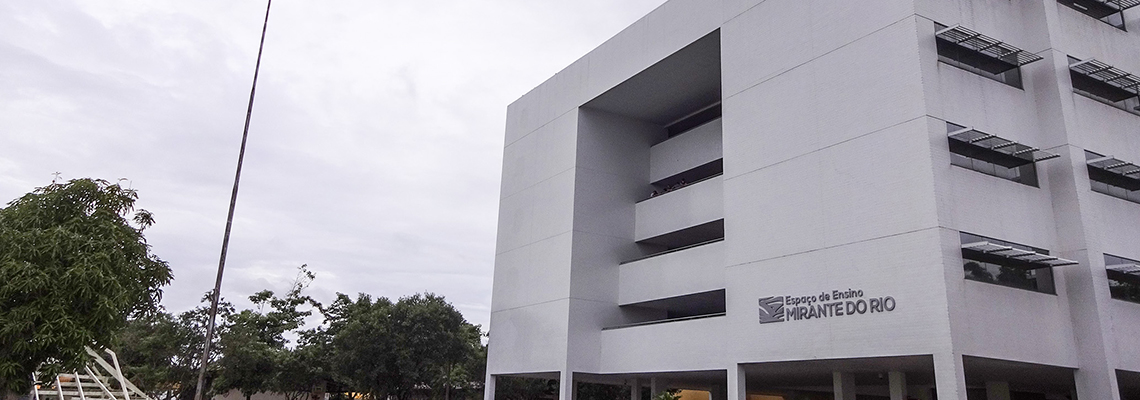Area of Concentration: Ecology
The proposal of Ecology as the only Area of Concentration of the course aims to advance the theoretical and empirical knowledge of Ecology, including its basic approaches which are auto-ecology, population biology and studies of communities and ecosystems. The main focus will be on studies in the Amazon, although the students will also be able to carry out their dissertations and theses in other Brazilian and South American biomes, encompassing several taxonomic groups of the animal and plant kingdom, both terrestrial and aquatic. Thus enabling studies ranging from basic knowledge on ecology to its application in the biological conservation and sustainable development of Brazilian society, especially in the Amazon region. Enabling advances in ecological theory as for the identification of threats to ecological systems and indication of sustainable human development alternatives.
Research Line:
Ecology of Communities and Ecosystems
Structure and organization of communities (richness and abundance of species, functional and phylogenetic diversity, relationships with the environment); Structure and functioning of ecosystems (primary and secondary productivity, cycles of matter and energy flow). Physical-chemical factors of the environment and their influence on biodiversity. The ecosystem concepts. Physical, chemical and biological processes and their influence on environments and organisms. Stability of communities. Conservation Biology Description of the biodiversity of communities. Different spatial and temporal scales and biotic systems. Biological interactions and the organization of communities: Competition, predation, parasitism, mutualism, allelopathy, facilitation. Coexistence of species: models and predictions. Study of biological interactions in tropical ecosystems. Direct and indirect effects on the species of a community. Introduction to the concepts of key species and engineering species. Biotic interaction networks: topology and structuring. The effects of activities in communities. Ecological services in communities. History of the formation of communities and ecosystems. Environmental and biogeographic filters and the determination of the current composition of communities. Phylogenetic relations of species and their influence on co-occurrence patterns. Dynamic and evolutionary constraints and the response of ecological systems to environmental disturbances. Management and conservation plans of ecological systems based on species responses according to their bionomic characteristics.
Research Line:
Ecology of Organisms and Populations
Autecology studies. Ecophysiology. Behavioral ecology. Phenotypic plasticity. Natural history. Population structure and dynamics. Distribution and evolutionary biology of species. Ecological interactions. Autecology and the concept of niche. Role of each species in communities and ecosystems. Investigation of the structure and functioning of organisms in response to environmental conditions. Adaptations to the spatial and temporal variations of the abiotic and biotic environment. Physiological and / or behavioral responses of organisms. Response of organisms to environmental variations and stresses. Life history attributes: life cycles; fecundity, calving, maturity and longevity. Concepts of r-k strategists species: generalist species (semelparas) and specialists (iteroptera). Species responses due to their bionomic characteristics and life history and the rapid environmental changes caused by men. Natural selection and adaptation of organisms to environments. Genetic drift. Age structure and population dynamics. Determinants of abundance or rarity of species in ecological systems. Body size and variations in species abundance. Abiotic factors, species abundances and their responses to climate change. Modelling abundance.
Research Line:
Landscape Ecology
Landscape structure and dynamics (fragmentation, connectivity). Metapopulations and, metacommunity. Use of remote sensing and geoprocessing in the study of populations and communities. Historical ecology of landscapes. Changes in habitat quality available to species after fragmentation events. Effect of amount of habitat available on spots on diversity. Structural and functional connectivity of landscapes. Effects of anthropized landscapes on metapopulations and metacommunities. Diversity of habitats in each landscape and the ways in which biodiversity is associated. Computational modelling of landscapes and theoretical generalizations. Agroforestry systems and associated fauna and flora. Ecological debt. Effect of spatial autocorrelation on landscape patterns. Effect of landscape structure on diversity. Effects of habitat loss and fragmentation on biodiversity. Quality, heterogeneity and complementarity of habitats and their effects on biodiversity. Mitigation, regeneration and recovery of landscapes and their effects on animal and / or vegetal biodiversity. Evaluation of the habitat use by components of biodiversity and the effectiveness of ecological corridors in connecting different landscape fragments.
Research Line:
Theoretical and Applied Ecology
Ecological theories and applications. Effects of human activities. Ecosystem services. Agroforestry systems and recovery of degraded areas. Evaluation and monitoring of environmental impact. Use of bioindicators. Ecology of diseases and their vectors. Conservation and management of wildlife. Modelling of ecological systems. Modelling potential distribution of species. Biogeography of conservation. Spatial prioritization for the selection of future biodiversity protection reserves. Macroecology. Functional and phylogenetic ecology applied to space macroscales. Introduction of exotic species and their effects on communities on a macro scale. Changes in land use patterns. Emission of greenhouse gases, associated climate changes and effects on biodiversity. Effects of deposition of nitrogen compounds (eutrophication) on communities. Comparative phylogenetic methods. Evaluation of the effects of human activities on ecosystem services, agroforestry systems and the biodiversity of these systems. Dispersion and human contamination by contagious diseases and vectors of diseases. Study of the biodiversity patterns at large geographic scales (altitudinal, latitudinal, Bergman and Rapoport rule, and the size of the body). Phylogenetic and functional diversity. Evaluation of areas of ecological importance for the installation of new biological conservation reserves in the Amazon, now and in the future, according to different climatic scenarios of climate change. Optimization of the use of financial resources to design new inventories of fauna and flora in the Amazon. Assessment of the potential distribution of endangered species. Evaluation of the distribution and possibility of invasion of areas in the Amazon by exotic species. Discussion and implementation of management plans in new areas of biodiversity protection in the Amazon.





